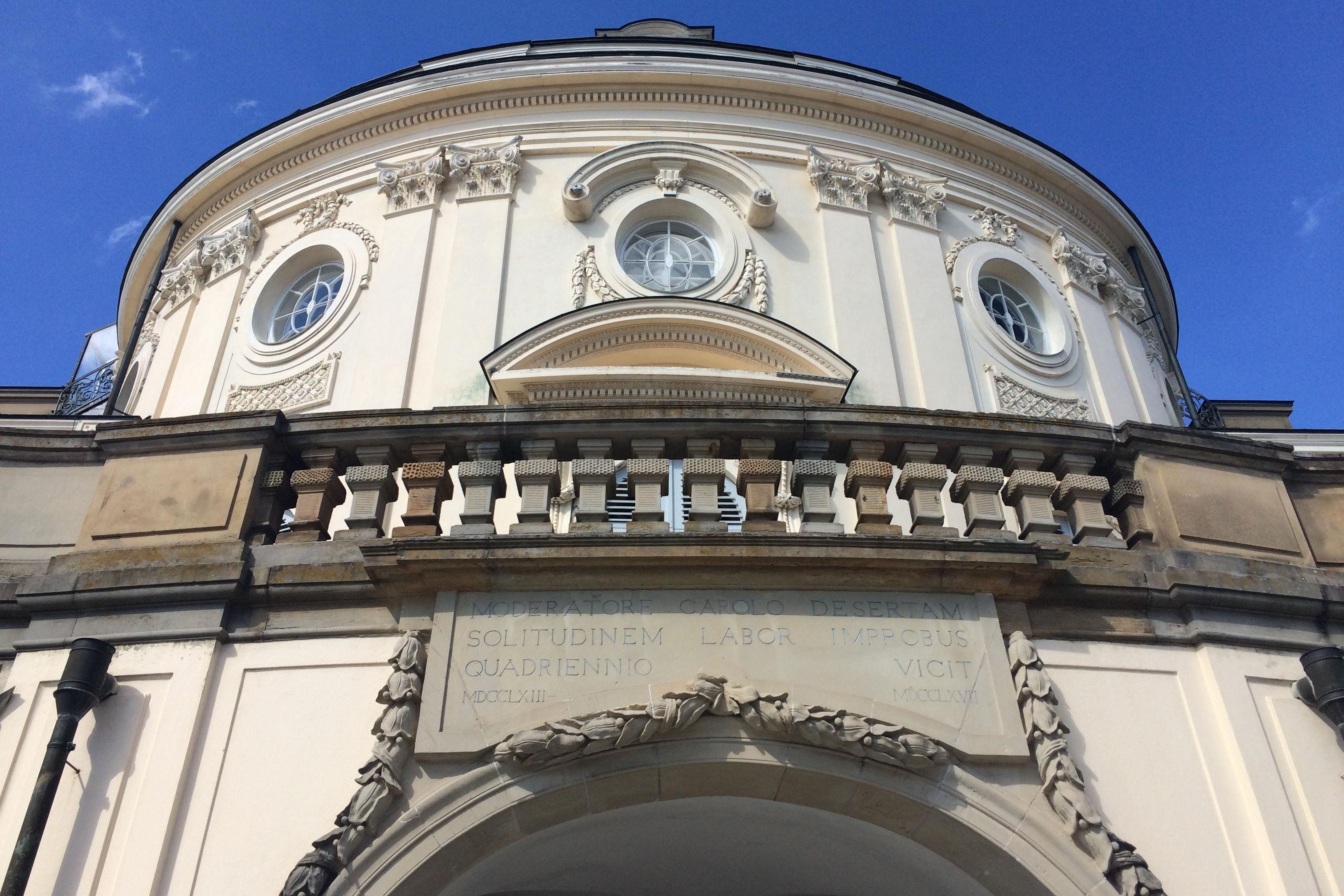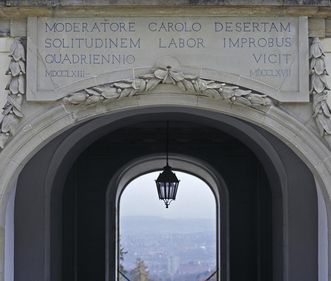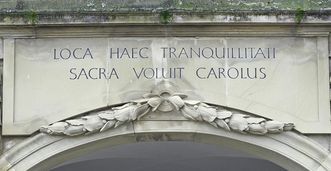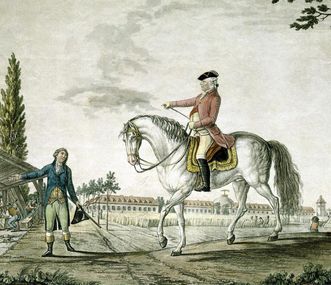Building inscription on the south portal
On the courtyard portal of the palace passageway, a sandstone cartouche is crowned with laurel leaves. Above the finely carved Latin numerals for the year, the following inscription can be read: MODERATORE CAROLO DESERTAM SOLITUDINEM LABOR IMPROBUS QUADRIENNIO VICIT MDCCLXIII – MDCCLXVII. In translation, that means: "Under the leadership of Carl, untiring work conquered the lonely desert in four years 1763–1767."






